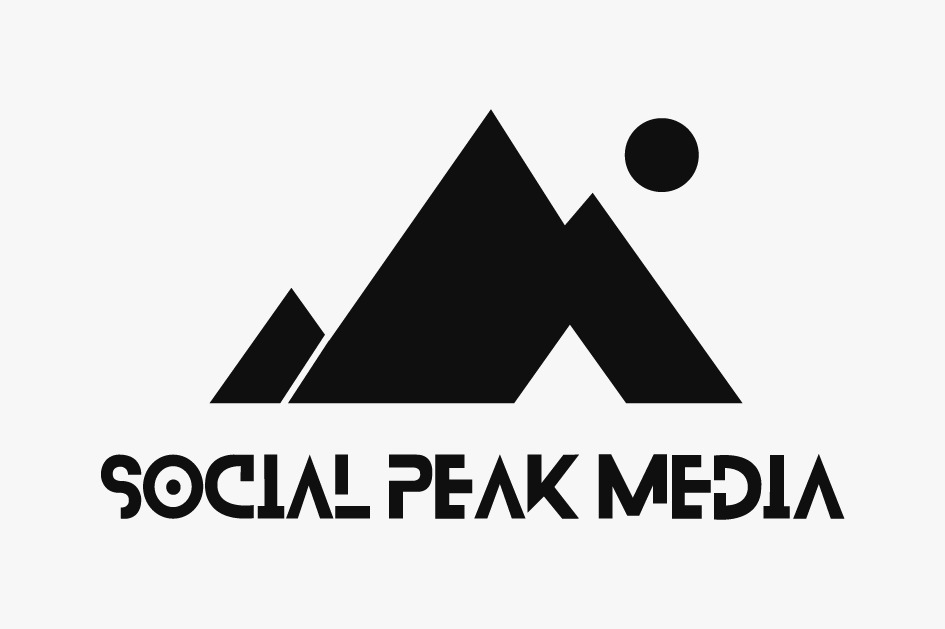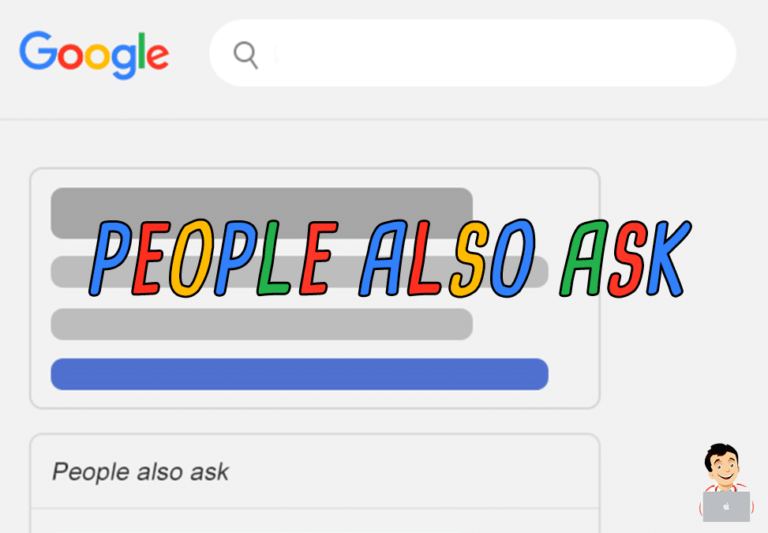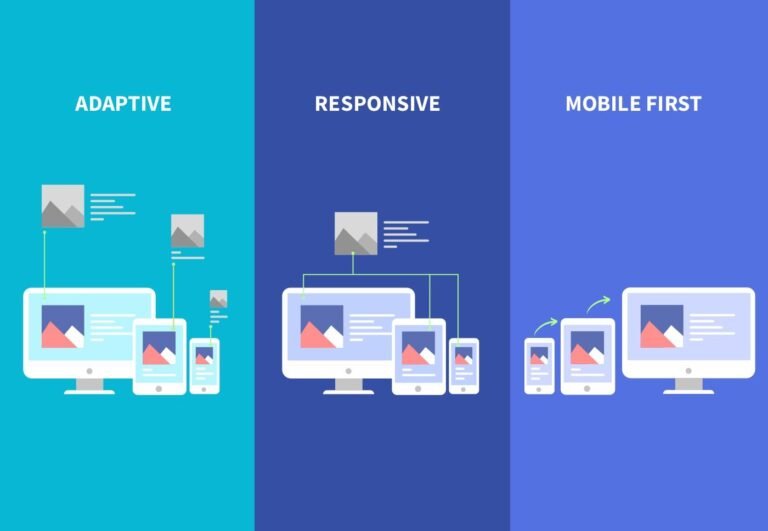Endless Ideas: How to Never Run Out of Blog Topics
Methods for content ideation – from keyword research and audience FAQs to competitor analysis – ensuring you always have fresh blog post ideas. (Evergreen/Data-Driven)
In the ever-evolving digital landscape, consistent content creation has become the cornerstone of successful online businesses and personal brands alike. Yet, even the most seasoned content creator eventually faces that dreaded blank screen, wondering where their next compelling content idea will come from. The challenge isn’t simply to create content, but to produce high-quality content that aligns with your audience’s needs, drives engagement, and supports your broader marketing objectives. This perpetual demand for fresh ideas can quickly become overwhelming, leading many promising bloggers to abandon their publishing schedules or their blogs altogether.
Fortunately, running out of blog post ideas isn’t inevitable—it’s entirely preventable with the right systems and methodologies in place. A strong content strategy includes techniques to keep your content fresh and consistent with your content creation goals.

Polly Clover Writes
This guide will help you discover how to never run out of blog topics and effectively go about content creation, from leveraging keyword research and audience insights to repurposing existing content. Incorporating content marketing strategies and integrating content into your strategy will ensure your content creation and distribution processes are streamlined. Whether it’s crafting engaging content on social media or building a sustainable content ideation pipeline, these steps will keep your creativity flowing and your audience engaged.
Content Creation: Building a Foundation for Success
Creating great content starts with understanding the fundamental principles that drive content success. Effective content isn’t produced at random—it’s strategically developed to meet specific goals while providing value to your target audience. Before diving into ideation techniques, ensure that your content has a clear purpose aligned with your overall business objectives, which is crucial for creating a content plan.
Every piece of content should serve at least one of these functions: educating your audience, solving a problem, entertaining readers, or driving specific actions, which helps with content strategy. Content you create without a clear purpose often fails to deliver measurable results, regardless of its quality. To streamline your content creation efforts, develop a systematic approach that includes research, planning, creation, editing, and distribution phases. This content creation process helps maintain quality while keeping your content relevant and valuable over time.

Entrepreneur
The success of your content strategy depends largely on how well you understand your audience’s needs and interests. Tailor your content to address specific pain points, answer common questions, or provide unique insights that your competitors miss. When you consistently create content that helps your audience, you establish authority in your niche and build lasting relationships with your readers.
Content Ideas: Proven Methods for Topic Generation
Generating a steady flow of content ideas requires more than just creativity—it demands a systematic approach to content ideation. Start by conducting a content audit of your existing content to identify gaps and opportunities. Look for topics that have performed well and consider creating updated versions or exploring related subjects that might interest your audience.
Keyword research remains one of the most reliable methods for discovering content topics that align with what your audience is actively searching for. Tools like Google Keyword Planner, Ahrefs, and SEMrush can help you find the right terms to target with your blog posts, allowing you to create content for search engines effectively. Focus on long-tail keywords with moderate competition that specifically relate to problems your audience faces.

User-generated content provides another valuable source of inspiration. Analyze comments on your blog posts, social media content, and emails from readers to identify questions or concerns that could serve as the basis for new content. This approach ensures that your content remains relevant to your audience’s evolving needs and interests.

Industry trends and news events offer timely hooks for content that feels fresh and engaging. While evergreen content forms the backbone of a sustainable blog, incorporating trending topics keeps your content calendar dynamic and demonstrates your brand’s awareness of current developments in your field.
Type of Content: Diversifying Your Content Portfolio
The type of content you publish can significantly impact engagement rates and the overall success of your content marketing efforts. Different content formats appeal to different segments of your audience and serve various purposes within your marketing funnel. Blog posts remain a staple format for in-depth exploration of topics, but incorporating video content, infographics, case studies, and interactive tools can help you reach new audiences and keep your existing followers engaged.

Consider how different types of content might address various stages of your customer journey. Awareness-stage content might include educational blog posts and how-to guides, while consideration-stage content could feature comparison articles or expert interviews, all of which are content you can create effectively. Decision-stage content typically includes case studies, testimonials, and detailed product information.
Finding the right content type for each topic ensures maximum impact. Some subjects lend themselves naturally to visual formats, while others are better suited to in-depth written analysis. As you plan out your content, consider which format will most effectively communicate your message and provide value to your audience.
Evergreen Content: The Gift That Keeps on Giving

Search Engine Journal
Evergreen content remains relevant and valuable long after its publication date, continuing to drive traffic and generate leads for months or even years, making it a vital content piece in your strategy. Examples of evergreen content include comprehensive guides, tutorials, foundational concept explanations, and resource lists that address perennial challenges or questions in your industry.
When creating evergreen content, focus on topics with enduring relevance rather than trending subjects that will quickly become outdated. Look for questions that new entrants to your field consistently ask or fundamental challenges that practitioners at all levels regularly face. These topics form the backbone of a sustainable content strategy, providing reliable traffic and establishing your authority in the niche.
To maximize the value of your evergreen content, regularly review and update these pieces to ensure they remain accurate and comprehensive. Small updates can refresh older content and give you opportunities to promote this content again to your audience. This approach is far more efficient than constantly producing new content, as it leverages the authority and search engine positioning your content has already established.
Effective Content: Quality Metrics That Matter
Creating effective content involves more than just incorporating the right keywords—it requires a deep understanding of what makes content valuable to both your audience and search engines. Great content thoroughly addresses the reader’s intent, provides actionable insights, and delivers information in an engaging, accessible format.
Measure the effectiveness of your content using both quantitative metrics (traffic, time on page, conversion rates) and qualitative feedback (comments, shares, direct reader responses). These indicators help you understand what content resonates with your audience and should inform your future content creation efforts.
The success of your content strategy depends on consistently producing content that appeals to your target audience while supporting your business objectives. This balance can be challenging to achieve, but it’s essential for sustainable growth. Rather than chasing viral moments, focus on building a body of work that collectively establishes your authority and provides ongoing value to your readers.
Content Creation Process: Systems for Sustainable Production

To manage your content effectively, establish a systematic content creation process that reduces decision fatigue and ensures consistent quality. This process should include stages for ideation, research, drafting, editing, optimization, and distribution. Having a clearly defined workflow helps organize your content creation and makes it easier to delegate tasks if you work with a team of content creators.
A content calendar serves as the central planning tool for your publishing strategy. Use it to schedule content topics, assign responsibilities, track deadlines, and ensure a balanced mix of content types. Your content calendar should align with your marketing calendar to support campaigns and seasonal initiatives while maintaining a consistent publishing rhythm.
Technology can significantly streamline your content production process, helping with content creation and distribution. Content management systems like WordPress, HubSpot, or Contentful provide frameworks for creating, organizing, and publishing your content efficiently. Additionally, project management tools help coordinate the various tasks involved in content creation, especially when multiple stakeholders contribute to the process.
Content Creator: Developing Your Unique Voice
As a content creator, your unique perspective and voice differentiate your content from the sea of similar information available online. Developing this voice takes time and practice, but it’s worth the investment as it builds recognition and loyalty among your audience. Your content that resonates most deeply with readers typically reflects your authentic expertise and viewpoint.
Many successful content creators find their stride by focusing on a specific niche where they can produce unique content consistently. Narrowing your focus allows you to develop deeper expertise and build a reputation as a go-to source in your particular area. This specialization makes content ideation easier as you develop intimate knowledge of your subject matter and audience needs.
For those managing their content across multiple platforms, maintaining consistency in voice while adapting to the requirements of different channels presents a particular challenge. Develop content templates and style guides that help keep your content creation efforts aligned with your brand identity while allowing for platform-specific optimizations.
Social Media Content: Extending Your Blog’s Reach

Social media content plays a crucial role in promoting your blog posts and extending their reach beyond your direct subscribers. Each piece of content you create for your blog can generate multiple social media posts, from teaser quotes and statistics to visual summaries and discussion questions. This approach helps get your content in front of new audiences while providing fresh material for your social channels.
Different social platforms favor different content formats and topics. LinkedIn typically rewards professional insight and industry analysis, while Instagram prioritizes visual content with strong emotional appeal. Tailor your content for each platform rather than simply cross-posting the same message everywhere. This customization ensures your content performs well in each environment.
Engage with your content consumers on these platforms to build relationships and gather feedback. Comments, direct messages, and shares provide valuable insights into what aspects of your content most resonate with your audience. This information should flow back into your content ideation process, creating a virtuous cycle of improvement.
Examples of Evergreen Content: Timeless Formats That Work
Some content formats consistently perform well as evergreen resources, representing the best content options for long-term engagement. Comprehensive “ultimate guides” that thoroughly cover a topic from multiple angles often become reference pieces that readers bookmark and return to repeatedly. These substantial resources establish your authority while providing ongoing traffic.
“How-to” tutorials addressing fundamental skills or processes in your field rarely go out of style. People are constantly learning new skills, and detailed, step-by-step guidance on accomplishing specific tasks provides evergreen value. Update these pieces occasionally to account for evolving tools or methodologies, but the core information often remains relevant for years.

Resource collections that organize and evaluate tools, websites, books, or other assets related to your niche serve as valuable reference content. These roundups save your readers time and position you as a knowledgeable curator in your field. Keep these collections updated periodically to maintain their relevance and value.
Case studies examining successful implementations or notable failures provide timeless lessons that remain instructive long after publication. These narrative-driven pieces combine storytelling with practical insights, promoting content that is engaging and informative for readers at various stages of expertise, ultimately helping you share your content effectively.
Content Marketing: Strategic Approaches for Maximum Impact

Effective content marketing requires more than just publishing blog posts—it demands a strategic approach to content creation and distribution. Your content marketing efforts should support specific business objectives while providing genuine value to your audience. This balance ensures that your content drives measurable results while building lasting relationships with your readers.
Content strategies vary widely depending on business models and objectives. E-commerce brands might focus on product-focused content that drives conversions, while SaaS companies often emphasize educational content that demonstrates expertise and addresses customer pain points. Develop content strategy based on your specific goals rather than copying competitors’ approaches.
The place in your content marketing funnel dictates the topics and formats you should prioritize. Top-of-funnel content typically addresses broader problems and questions to attract potential customers, while middle- and bottom-funnel content speaks more directly to your solutions and differentiators. A well-rounded content plan includes material for each stage of the customer journey.
Blog Posts: Structuring for Readability and Impact

The structure of your blog posts significantly impacts their effectiveness. Each post should include an engaging introduction that clearly communicates the value proposition, well-organized body content with descriptive subheadings, and a conclusion that summarizes key points and suggests next steps. This consistent structure helps readers navigate your content efficiently, enhancing their experience with each content piece.
Long-form blog posts (typically 1,500+ words) often outperform shorter pieces in search rankings and social shares, but only when they provide comprehensive value. Don’t pad content to reach arbitrary word counts—focus instead on thoroughly addressing your topic from multiple angles. If a subject doesn’t warrant extended treatment, a concise post is preferable to diluted content.
Visual elements enhance both the appeal and effectiveness of blog posts. Incorporate relevant images, charts, diagrams, or videos to break up text and illustrate key concepts. These elements improve engagement and help visual learners grasp your message more easily, making it one of the best content pieces for diverse audiences. Every piece of content you create should consider how visual components might enhance its impact.
Niche: Finding Your Content Sweet Spot
Identifying the right niche for your content involves finding the intersection of your expertise, your audience’s interests, and market opportunities. The most successful content creators focus on specific areas where they can provide unique insights or perspectives rather than competing in oversaturated general topics.
Many bloggers start too broad and struggle to find the right content direction. Narrowing your focus allows you to develop deeper expertise and build a dedicated audience who shares your specific interests. This specialization makes content ideation easier as you become intimately familiar with the questions and challenges in your particular domain, allowing you to create your content plan more efficiently.
Your content that resonates most strongly typically addresses pain points or opportunities that are underserved by existing content. Conduct research to identify these gaps through keyword analysis, audience surveys, or competitor content audits to create a content plan that addresses unmet needs. These underexplored areas often provide the most fertile ground for distinctive, valuable content that can promote content engagement.
Content Calendar: Planning for Consistency and Balance

A well-designed content calendar ensures a steady flow of material while maintaining thematic coherence across your publishing efforts. Create a content calendar that balances different content types, topics, and funnel stages to keep your audience engaged and support your broader marketing objectives.
When planning your content calendar, consider seasonal trends, industry events, and product launches that might influence your audience’s interests or needs. Align your content schedule with these external factors to maximize relevance and timeliness. This approach helps your content remain fresh and responsive to your market’s evolving context.
Your content calendar should be flexible enough to accommodate unexpected opportunities or shifts in priorities. Reserve space for reactive content that addresses emerging trends or news events, while maintaining your commitment to scheduled evergreen pieces. This balance ensures your content stays relevant while building a sustainable resource library.
Publish Content: Timing and Distribution Strategies
The timing of when you publish content can significantly impact its initial performance. Research your audience’s online habits to identify optimal publishing windows when they’re most likely to engage with new material. These patterns vary by industry and audience demographic, so analyze your specific metrics rather than following generic advice.
Once you publish content, promote your content across multiple channels to maximize its reach. Email newsletters, social media posts, community forums, and paid distribution can all drive traffic to new pieces. Develop a consistent promotion schedule that extends beyond the initial publication date to ensure your content reaches its full potential audience.
The success of your content often depends on effectively reaching the right readers at the right time. Segment your distribution efforts to target specific audience groups with the most relevant material. This personalized approach increases engagement rates and helps build stronger connections with your readers.
Content Ideation: Systematic Approaches to Topic Generation
Content ideation shouldn’t rely on sporadic inspiration but should instead follow systematic processes that consistently generate relevant ideas. Organize your content ideation through regular brainstorming sessions, competitor analysis, and audience research activities. These structured approaches ensure a steady pipeline of potential topics.
Topic ideas often emerge from considering different angles on core themes related to your expertise, helping you generate ideas for your blog. Create content clusters that explore various aspects of central subjects, allowing you to comprehensively cover important areas while maintaining focus on your primary areas of authority. This approach builds topical depth that search engines reward.
AI content tools can accelerate your ideation process by analyzing trends, suggesting related topics, or helping you identify gaps in existing coverage. Tools like ChatGPT, Google’s Natural Language API, or specialized content research platforms provide data-driven insights that complement your subjective expertise and intuition.
Content Topics: Building Thematic Authority
Organizing your content topics into thematic clusters helps build comprehensive authority in specific areas. Rather than creating isolated pieces, develop interconnected content that collectively addresses major themes from multiple angles and depths. This approach strengthens your position with both readers and search engines.
Your content topics should reflect a balance between evergreen subjects and timely issues. The majority of your content should address perennial questions and challenges to build sustainable traffic, while occasional trend-focused pieces demonstrate your awareness of current developments and attract new visitors through timely relevance.
Finding content topics that align with both audience interests and business objectives requires ongoing research and analysis. Monitor search trends, social conversations, industry publications, and competitor content to identify emerging opportunities. These insights help you develop content that appeals to your audience while supporting your strategic goals.
AI Content: Leveraging Technology for Enhanced Productivity

AI content tools have transformed the content creation landscape, offering capabilities that range from ideation and research assistance to writing and optimization, enabling content writers to create content that resonates. These technologies can help streamline your content production process, especially for routine aspects of content development that don’t require deep human creativity or expertise.
When incorporating AI content into your workflow, focus on using these tools to enhance rather than replace human judgment. AI excels at generating outlines, suggesting headlines, identifying relevant statistics, or drafting initial content, but human oversight remains essential for ensuring accuracy, brand alignment, and genuine value. The most effective approach combines technological efficiency with human creativity and expertise.
The landscape of AI content tools continues to evolve rapidly, with new capabilities emerging regularly. Experiment with different solutions to identify those that best complement your specific content needs and workflow. From specialized writing assistants to comprehensive content planning platforms, these technologies can significantly boost your productivity when used strategically.
Topic Ideas: Sources of Endless Inspiration
Customer questions provide one of the richest sources of topic ideas for relevant content. Every inquiry from a prospect or client potentially represents dozens or hundreds of similar questions from others who didn’t ask directly. Create a system for capturing and categorizing these questions to fuel your content pipeline with audience-validated topics.
Industry reports and research studies offer valuable frameworks for developing original content. These publications typically identify trends, challenges, or opportunities that you can explore through your unique lens. By adding your perspective to established data, you create content that combines authoritative information with distinctive insights, making it a valuable content piece.
Analyze your competitors’ content to identify both gaps and opportunities. Look for successful topics they’ve covered that you could approach differently or more comprehensively, creating a list of content ideas to enhance your strategy. Equally important, search for subjects they’ve overlooked entirely that might interest your shared audience. This competitive intelligence helps you develop content that stands out in your niche.
Compelling Content: Crafting Material That Captivates Readers
Creating compelling content requires more than just informative material—it demands engaging storytelling, clear structure, and distinctive voice. The most successful content creators understand that even technical or educational content benefits from narrative elements that capture attention and maintain interest throughout the piece, making it easier to create content that resonates.
Different types of content require different approaches to engagement. Educational pieces might leverage clear explanations and practical examples, while opinion content thrives on strong perspectives and persuasive arguments. Adapt your approach to match both your subject matter and the expectations of your target audience.
The content that you create should always deliver on the promise made in your headline and introduction. This alignment between expectation and delivery builds trust with your audience and encourages them to return for future pieces. Consistently producing compelling content that fulfills its promise establishes your reputation as a reliable, valuable resource in your field.
Conclusion
The challenge of maintaining a continuous flow of content topics isn’t insurmountable—it simply requires systematic approaches to content ideation, a clear understanding of your audience’s needs, and efficient processes for content creation and distribution. By implementing the strategies outlined in this guide, you’ll transform the daunting blank page into an opportunity to connect with your audience through valuable, engaging material that is highly relevant to your content and ensures it resonates with your readers. A well-thought-out content strategy based on performance can further help streamline the process, aligning your topics with measurable outcomes and audience preferences.
Repurposing content involves taking existing content and transforming it into new formats, enabling you to extend its value and reach. Whether you’re updating an old blog post, creating a social media infographic, or turning a webinar into a podcast episode, repurposing ensures your content reaches your target audience through diverse channels. Ultimately, sustainable systems and thoughtful strategies will ensure you never run out of topics, and your content remains engaging, relevant, and impactful.
Disclosure: Our blog contains affiliate links to products. We may receive a commission for purchases made through these links. However, this does not impact our reviews and comparisons. We try our best to keep things fair and balanced, in order to help you make the best choice for you.






